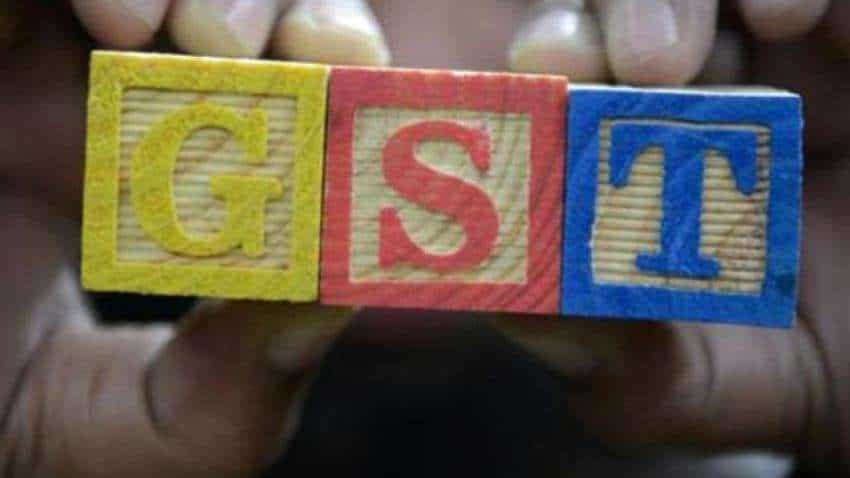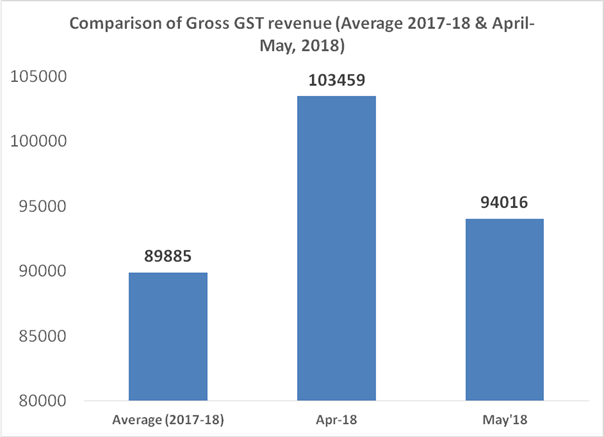One year of GST: Tax revenue falls short of FY18 target; will FY19 be better?
One year of GST: The goods and services tax (GST) has wrought major changes in India, but it needs to also note the revenue generated from this regime fell short of government’s FY18 target as well.

Today India celebrates the first anniversary of Goods and Services Tax (GST) regime and the Finance Ministry has gone as far as to declare this day as ‘GST Day’ to highlight its importance well into the future. It’s a very special moment for entire Prime Minister Narendra Modi government. Every eye today would be looking out for GST’s performance outlook. Modi in his reign as PM has not only set new history for his BJP party but also for the entire nation. He will be remembered as the man who changed an entire face of India financial system with reforms like demonetisation and GST. Modi took to his Twitter handle in acknowledging GST today. He said, “GST has brought growth, simplicity and transparency. It is boosting formalisation, enhancing productivity, furthering ‘Ease of Doing Business' and Benefitting small and medium enterprises.”
Importantly, this is also report card day for GST. Most of opposition parties, citizens, firms and analysts would be taking into account how GST has actually performed and how can it move ahead before actually giving it a grade.
Modi highlighted the key achievements of GST in one year's time. In 12 months gone by, GST has added 48 lakh enterprises, number of invoices processed increased to around 350 crore, number of returns filed jumped to 11 crore and number of e-way bills came in at over 10 crore.
One would agree that GST did some major business in India, but it needs to also note the revenue generated from this regime fell short of government’s FY18 target as well.
GST has brought growth, simplicity and transparency. It is:
Boosting formalisation.
Enhancing productivity.
Furthering ‘Ease of Doing Business.’
Benefitting small and medium enterprises. #GSTForNewIndia pic.twitter.com/IGGwUm59rB
— Narendra Modi (@narendramodi) July 1, 2018
This regime has been in effect from July 01, 2017 by replacing several taxes like central excise duty, services tax, additional customs duty, surcharges, state-level value added tax and Octroi. Even other levies which were applicable on inter-state transportation of goods have also been done away within GST regime.
The country follows a dual GST method.
Every month, data has been given on GST collection by the Finance Ministry. The latest data of GSTs performance has been available till May 2018. It needs to be noted that, GST revenue collection has been on one roller coaster ride.
The start of GST collection was very good. In July 2017, the government pocketed GST revenue of Rs 94,000 crore, which further tumbled to Rs 93,141 crore in August 2017 but soon bounced back up to Rs 95,131 crore in September 2017. These were the only three months where revenue collection was over Rs 93,000 crore.
Since then, GST collection has been below Rs 90,000 crore till March 2018. The lowest GST collection was made in the month of November 2017 where it stood at Rs 80,808 crore a five month low. This resulted in many question the true existence of GST and it’s real motive going ahead.
However, government has been very confident on this 16-year long pending regime which finally saw reality in India. They believed GST is a revolutionary game changer for the country in coming years.
But this did not stop the government to set a GST revenue target of Rs 8.2 lakh crore for eight months of FY18. Now, from July 2017 till March 2018, GST’s cumulatively collection came in at Rs 7.4 lakh crore which was just 67% of the revenue target.
Under the new GST regime, the last date for filing of GST returns is 20th of the succeeding month, even on the last day of the financial year.
Earlier the Finance Ministry highlighted that average GST collection in FY18 stood at Rs 89,885 crore.
Total GST compensation released to the states for the FY 2017-18 (Jul,2017 to Mar, 2018) has been Rs 47844 crore.
Despite the criticism, Modi government is not ready to back down in taking this reform to extent level and especially in tax collection. Thereby, the government has set a GST revenue target at massive Rs 12 lakh crore for fiscal FY19.
Now two months have already passed of FY19 and performance looks quite promising.

Total gross GST revenue collected in the month of May 2018 is Rs 94,016 crore of which CGST is Rs 15,866 crore, SGST is Rs 21,691 crore, IGST is Rs 49,120 crore (including Rs 24,447 crore collected on imports) and Cess is Rs 7,339 crore (including Rs.854 crore collected on imports).
Although May 2018 collection is lower compared to April month where the revenue stood at Rs 103,459 crore. According to the ministry this was due to year end effect.
It also needs to be noted that, gross collection in latest May is much higher than the monthly average of GST collection in FY18.
Can government actually surpass the GST target for FY19, that is the real question one should be asking themselves.
Government expected revenue to be around Rs 95,000 to Rs 96,000 crore from April month, which was seen rising to Rs 1 lakh crore from June to July 2018. The monthly revenue target has been set at Rs 1 lakh crore compared to FY18 monthly target of Rs 91,000 crore.
Dr. Soumya Kanti Ghosh, Group Chief Economic Adviser at State Bank of India (SBI) believes that India’s gross tax revenue is expected to grow by 16.7% in FY19 to Rs 19.1 lakh crore.This revenue target from taxation is supported by 10.2% growth in corporation tax and 20.4% rise in personal income tax from direct taxes.
There have been several speculations in public domain that the GST collections in current fiscal and budget estimates for FY19 are overtly aggressive, but these are flawed.
According to Ghosh, the GST collections growth rate for FY19 comes to around 14%-16%, that is similar to the decadal gross tax revenue growth rate at 13.9%.
Also stripping out the additional revenue from new capital gains tax, the BE of income tax in FY19 is 14% (5 year CAGR at 17.1%).
Thus, Ghosh adds, “it seems that the revenue targets of the Government for FY19 are reasonable. Furthermore, cross country comparison shows that with the current global slowdown, most of the countries have been witnessing increase in fiscal deficit.”
There are some minor exceptions including India, France, Germany, etc. which are on the path of fiscal consolidation.
Get Latest Business News, Stock Market Updates and Videos; Check your tax outgo through Income Tax Calculator and save money through our Personal Finance coverage. Check Business Breaking News Live on Zee Business Twitter and Facebook. Subscribe on YouTube.
RECOMMENDED STORIES

Rs 3,500 Monthly SIP for 35 years vs Rs 35,000 Monthly SIP for 16 Years: Which can give you higher corpus in long term? See calculations

Power of Compounding: How long it will take to build Rs 5 crore corpus with Rs 5,000, Rs 10,000 and Rs 15,000 monthly investments?

SBI 444-day FD vs PNB 400-day FD: Here's what general and senior citizens will get in maturity on Rs 3.5 lakh and 7 lakh investments in special FDs?

SCSS vs FD: Which guaranteed return scheme will give you more quarterly income on Rs 20,00,000 investment?
02:27 PM IST










 States not in favour of bringing ATF under GST, says finance minister
States not in favour of bringing ATF under GST, says finance minister 55th GST Council Meeting: No GST payable on penal charges levied & collected by banks & NBFCs from borrowers for non-compliance, says Nirmala Sitharaman
55th GST Council Meeting: No GST payable on penal charges levied & collected by banks & NBFCs from borrowers for non-compliance, says Nirmala Sitharaman  GST Council Meeting: Packaged & labelled popcorn with added sugar to attract 18% rate, decision on insurance products deferred
GST Council Meeting: Packaged & labelled popcorn with added sugar to attract 18% rate, decision on insurance products deferred  55th GST Council Meeting: Jet fuel inclusion, lower taxes on insurance policies to be considered
55th GST Council Meeting: Jet fuel inclusion, lower taxes on insurance policies to be considered GoM on GST rate rationalisation yet to submit report, GST Council to take final decision: CBIC
GoM on GST rate rationalisation yet to submit report, GST Council to take final decision: CBIC